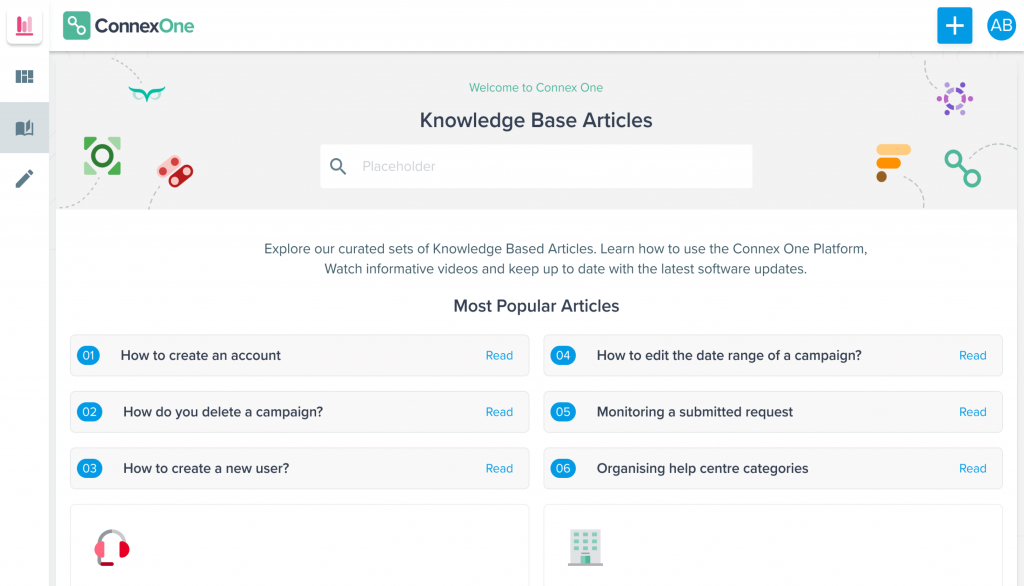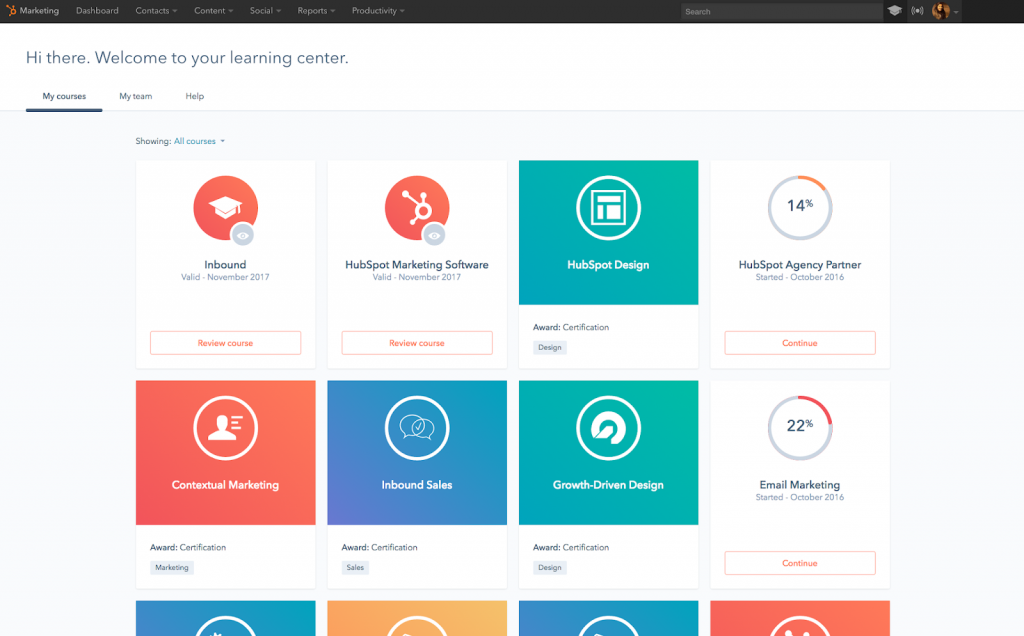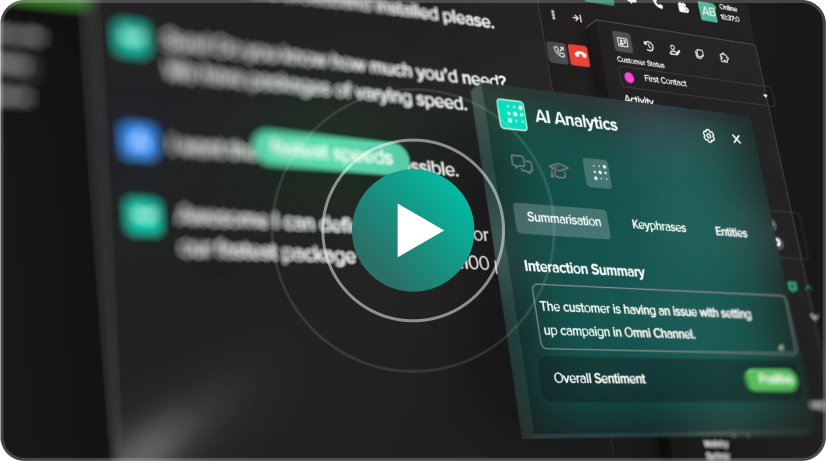Every modern business is expected to provide customers with immediate support if they’re experiencing problems. Yet with the evolving digital landscape where users expect instant gratification, how can businesses facilitate this without having customer teams on-call 24/7? The answer is simple, empower your customers to find their own solutions with Customer self-service.
What is customer self-service?
Customer self-service is any action or task that can be completed by a customer without the involvement of an agent or employee.
Common examples of self-service include: scanning items at a supermarket self-checkout, marking an item for returns on an online retail store, or ordering on a screen at a fast-food restaurant.
Cost-effective for businesses and convenient for customers
For most companies, the benefits of customer self-service are two-fold:
- Customers are better equipped to solve their own problems, which leads to increased customer satisfaction and a higher likelihood of word-of-mouth referrals and repeat purchases.
- Businesses benefit from decreased demand for support services and, as a result, incur lower labour costs.
This effectiveness of self-service systems has been reflected in their popularity with customers across the globe. In a report by the Harvard Business Review, 81% of customers stated they would prefer to handle an issue themselves before seeking assistance.
Another study revealed that 40% of all customers who contact a call centre do so only after trying to self-serve. This tells us two things: the first is that self-service is the go-to option for a large volume of unsatisfied or confused customers; the second is that, unfortunately, many businesses are not offering efficient self-service options.
What’s more, customer self-service isn’t just limited to brick-and-mortar shops. Online self-service is a crucial part of the modern customer experience. How crucial? A study by Microsoft showed that around 89% of American customers expect businesses to have some form of online self-service.
Benefits of customer self-service for businesses
On the businesses’ side, the benefits of implementing efficient self-service solutions are also backed by the data. A study by Gartner Research revealed that organisations see up to 70% reductions in calls, chat, and/or email enquiries after implementing a Virtual Customer Assistant.
But that’s not all: self-service can also help you close more sales. A study by Forrester shows that 53% of customers are likely to give up on an online purchase if they can’t find a quick answer to their question. In other words, if you don’t have answers readily available, half of your potential customers will not buy from you.
How to improve customer self-service
Depending on your business, there are a variety of ways to begin building or improving your current self-service setup.
Here are four ways your business can introduce customer self-service:
1. Use knowledge base software to build a knowledge hub
Knowledge bases are dedicated areas of your website made up of written articles that provide customers with targeted answers to their queries. Knowledge base software can help you create and organise resources to make your self-service materials more accessible, engaging, and helpful for your customers.
Depending on your business, a knowledge base can sit on a separate web portal, or as a collection of individual pages on your website. This will also be determined by the knowledge base software you use and the level of personalisation it allows.
You can write and share articles with various functions within a knowledge base, such as:
- Explainer articles: Explainers provide general overviews of individual features, while also outlining the benefits and use cases.
- How-to articles: How-to articles are step-by-step guides that direct a customer through a specific process or troubleshoot common issues.
- Frequently asked questions (FAQs): FAQs are searchable lists of customers’ most frequently asked questions and the relevant solutions for each, which should be easily accessible to help customers address common issues.

You may also want to include a community forum or comments section in your knowledge base. Community forums allow your customers to discuss solutions among themselves without the need for an agent, reducing the need for intervention from your team even further.
The value of a robust knowledge base goes beyond customer service. It can also help your website rank higher on search engines like Google, which is important for receiving more traffic and potential customers.
Optimising your knowledge base articles for search engines by using relevant keywords and phrases helps them appear higher in search results. When people click on your articles from search engine results, it sends a signal to search engines that your website is a credible source of information, leading to higher rankings and more potential customers.
In summary, having a robust and optimised knowledge base can boost your website’s search engine rankings, which can help attract more customers to your business.
How to create a knowledge base
These days, it’s easier than ever to set up a knowledge base. All you have to do is find a knowledge base software tool that serves your particular needs.
Tools such as Knowledge from Connex enable you to design your own customer self-service portal. Think of it as a knowledge based article creator, support ticketing system, and training course designer all rolled into one!
2. Offer product knowledge training courses
Short and interactive product knowledge training courses are an effective way to teach your customers how to utilise your products or features. These courses can include video tutorials, written walkthroughs, and quizzes to test the knowledge gained and ensure the customer has understood the content.
To make product knowledge training courses more engaging, you can also incorporate Gamify and certification elements, allowing customers to complete courses at their own pace while receiving rewards for their progress.
Interactive training courses offer several benefits compared to other training content. An Easy Generator study showed that a well-designed product knowledge training course often leads to:
- Lower customer churn rates
- Higher customer engagement
- Reductions in one-time customer issues
It’s estimated that companies who include some form of early-stage education will make a customer 131% more likely to make a purchase, according to a study by Conductor.

How can I create product knowledge training courses?
Companies like 360Learning give you the opportunity to create training programs through a learning management system (LMS).
LMS’s are cloud-based platforms designed to help you build your own custom course with customisable rewards and certificates.
3. Provide training videos
If you’re looking to add another dimension to your customer self-service offerings, developing your own training videos can offer a more visual approach.
You can use them to answer FAQs, showcase and demonstrate product features, or give your customers tips and tricks to help them navigate your company’s services.
Not only that, but you could also embed them in your knowledge base articles, giving your customers flexibility when it comes to handling queries.
What’s the best way to make training videos?
With the array of tools on offer, video creation has become more accessible, enabling more and more businesses to establish their own in-house.
We recommend starting with your script. This process can be simplified if you already have written documentation on a product or feature.
You could then easily adapt it to a video script, where you can put it into a teleprompter, or add it to a text-to-speech service like Natural Reader for a low-cost voice-over solution.
When it comes to editing your video, there’s a variety of services at your fingertips, both free and paid. Outside the typical heavy hitters like Adobe Premiere or Final Cut Pro, companies like Clipchamp offer a free cloud-based editing suite that gives users an intuitive way of creating their own videos.
To host your videos, look to websites like YouTube or Vimeo, as they can provide you with enough storage space for your videos while also giving you the ability to easily share them all across the web.
4. Add live chat to your website
If you want a quick and reliable way of communicating with your customers, live chat remains the #1 choice for web-based communication, and it’s easy to see why.
Live chat gives agents the ability to handle multiple customer interactions at the same time while also providing instantaneous responses to all kinds of queries.
If you want a completely automated system, you could also enhance your live chat service with chatbots.
Chatbots, also known as Conversational Bots, use language-processing to analyse keywords in a customer’s question. The chatbot can then provide the user with an answer to their query or direct them to any relevant learning material.
How do I add live chat to my website?
It’s never been easier to add live chat to your website. You can use products like ConnexAI to add a live chat widget directly to your site without needing coding experience and start talking to live users within minutes.
For a more bespoke configuration, pairing with Connex’s Flow feature can fully automate live chat processes, along with the rest of your customer journey, or enable your team to use canned responses and ai self-service to quickly guide a customer to the right destination.
Implementing customer self-service
Hopefully, we’ve given you a better idea of how customer self-service can add value to your customer service. While you might want to try to add every suggestion at once, we recommend starting off your self-service journey by talking to an expert.
If you’re looking for an easy way to create a knowledge base or implement customer self-service, book a meeting with our team to discuss how you can utilise our user-friendly Knowledge knowledge base software.
